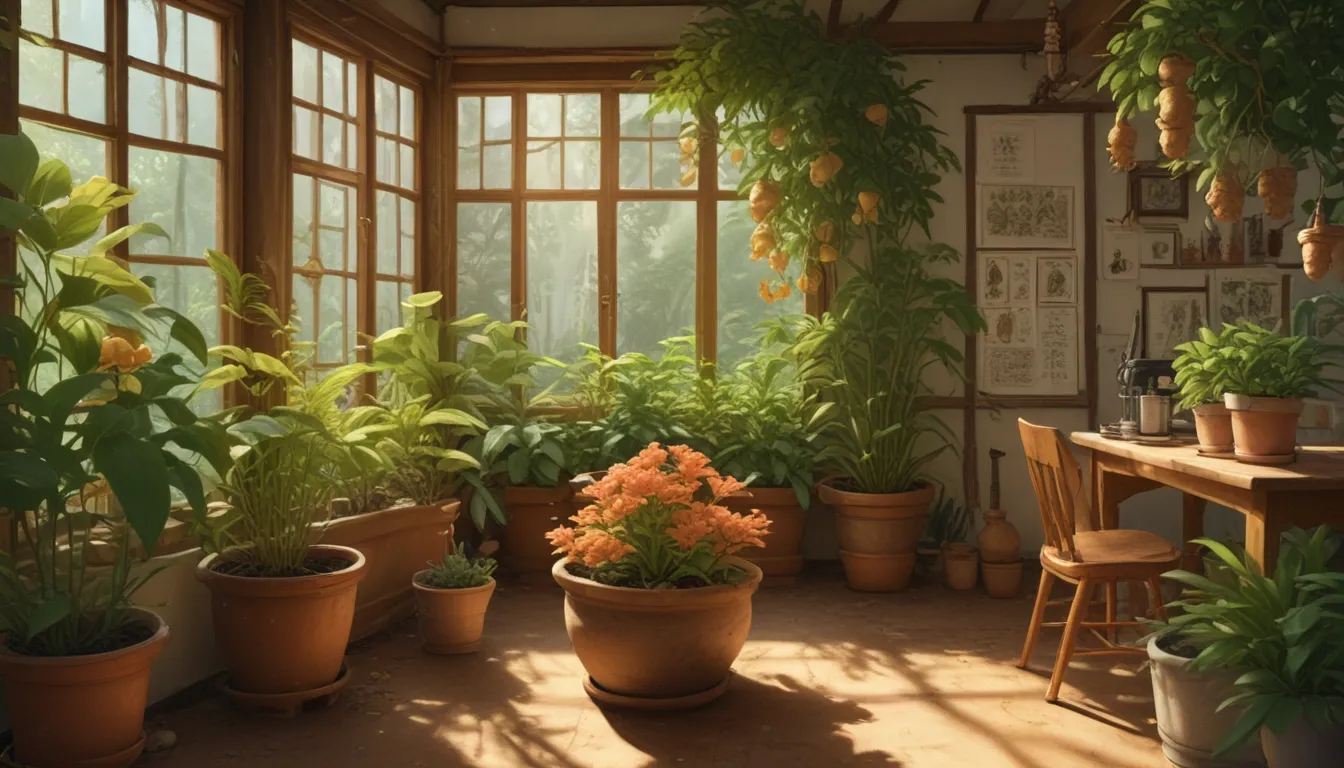A Guide to Growing Ginger Indoors: Tips for Cultivating Zingiber Officinale

Ginger is a versatile spice that can add flavor to a variety of dishes. Whether you love using it in your cooking or simply enjoy the tropical fragrance, growing ginger indoors can be a rewarding experience. In this guide, we will explore the ins and outs of growing Zingiber officinale in containers, providing you with valuable tips and information to help you succeed.
Introduction to Growing Ginger Indoors
Living in a northern climate like Vermont doesn’t mean you have to give up on cultivating heat-loving plants. With a little bit of effort, you can bring the tropics right into your home by growing ginger indoors. This tropical plant thrives in filtered sunlight, warm and humid conditions, and rich, moist soil. By replicating these ideal growing conditions, you can enjoy fresh ginger all year round, even during the coldest winters.
What You’ll Learn
- Overview of Growing Ginger Indoors
- Getting Started with Planting
- Caring for Your Plants
- Harvesting Ginger
- Additional Growing Tips
- Cooking and Recipe Ideas
Getting Started with Planting
To start your ginger indoor garden, you’ll need the following supplies:
- Large, wide planting container with drainage holes
- Tray or saucer for drainage
- Small stones for improving drainage
- Ginger roots with budding eyes
- Well-draining, nutrient-rich potting soil or alternative mix
- Portable container for easy movement
Look for healthy ginger roots with multiple budding eyes, as these are essential for successful propagation. Start by soaking the roots in warm water overnight and then cutting them into sections with at least one budding eye each. Plant these sections in the potting mix, ensuring the buds are facing upwards. Keep the soil moist but not waterlogged and place the container in a warm, well-lit spot with indirect sunlight.
Caring for Your Plants
Once your ginger plants are established, caring for them involves maintaining warmth, moisture, and proper nutrition. Here are some tips:
- Keep the temperature around 75°F
- Provide filtered sunlight and humidity
- Water the plants regularly, ensuring good drainage
- Feed with organic liquid fertilizer during periods of growth
Mimicking natural conditions is key to successful ginger cultivation. By creating a warm, humid environment and feeding your plants properly, you can help them thrive and grow to their full potential.
Harvesting Ginger
While it may take several months for the ginger rhizomes to mature fully, you can start harvesting small pieces as early as three to four months after growth begins. Carefully remove the soil around the outer edges of the container to access the rhizomes, leaving enough intact to allow for continued growth. Harvesting in this manner allows for sustained harvesting over time, ensuring a fresh supply of ginger whenever you need it.
Additional Growing Tips
- Use a heat mat to warm the soil during cooler weather
- Water sparingly until shoots emerge, then increase watering
- Move plants outside in the summer for added sunshine
- Provide fresh compost as needed for optimal nutrition
By following these additional tips, you can enhance the growth and productivity of your indoor ginger plants, ensuring a bountiful harvest each season.
Cooking and Recipe Ideas
The versatility of ginger extends beyond its use as a spice. Fresh ginger can add a zingy flavor to a variety of dishes, including soups, stir-fries, and salads. Experiment with different preparation methods, such as drying, pickling, or crystallizing ginger, to discover new flavors and textures. For a refreshing treat, try blending fresh ginger into smoothies for a tropical twist.
Conclusion
Growing ginger indoors offers a unique opportunity to enjoy fresh, flavorful spice year-round. By following the tips and techniques outlined in this guide, you can create a thriving indoor garden of Zingiber officinale that will enhance your culinary endeavors and brighten your living space. Share your experiences with growing ginger indoors in the comments below and let us know how it has enriched your gardening journey. Happy planting!





